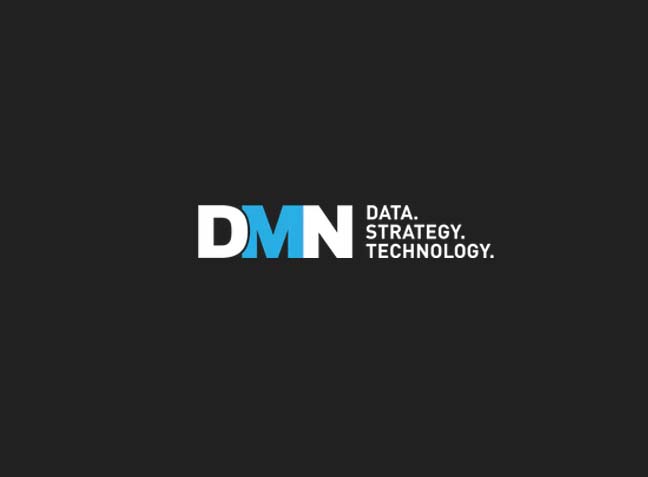Creating a successful marketing strategy is essential for any startup. It helps you connect with potential customers and communicate what makes your business special. By understanding your audience and using the right tools, you can promote your brand effectively and grow your business. Here are some key takeaways to help you on your marketing journey.
Key Takeaways
- Know your business purpose to guide your marketing efforts.
- Use clear and relatable messaging to connect with your audience.
- Choose the right digital platforms to reach potential customers.
- Gather and respond to customer feedback for continuous improvement.
- Utilize referrals to encourage happy customers to spread the word.
Developing a Comprehensive Startup Marketing Strategy

Understanding Your Business Purpose
To kick off our marketing journey, we need to understand why our business exists. This means asking ourselves what problem we are solving for our customers. By knowing our purpose, we can create a marketing strategy that resonates with our audience. Here are some key points to consider:
- What needs does our product fulfill?
- Who benefits from our service?
- How do we want to be perceived in the market?
Creating Relatable Messaging
Next, we should focus on crafting messages that connect with our audience. Relatable messaging is crucial for engaging potential customers. We can achieve this by:
- Using language that matches our audience’s tone.
- Sharing stories that reflect our brand values.
- Highlighting the benefits of our product in everyday terms.
Identifying Profitable Marketing Channels
Finally, we need to find the right channels to reach our customers. This involves researching where our audience spends their time and how they prefer to receive information. Some effective channels include:
- Social media platforms like Facebook and Instagram.
- Email marketing to keep our audience informed.
- Content marketing through blogs and videos to provide value.
By developing a comprehensive marketing strategy, we can effectively position our startup in the market and attract the right customers. A comprehensive guide to small business marketing will help us leverage both traditional and digital techniques to achieve our goals.
Leveraging Digital Marketing for Startups


In today’s world, digital marketing is essential for startups. It helps us reach a larger audience without breaking the bank. Here’s how we can effectively use digital marketing to grow our startup:
Establishing a Digital Presence
To start, we need to create a strong online presence. This includes:
- Building a user-friendly website.
- Setting up social media profiles on platforms like Facebook, Instagram, and LinkedIn.
- Ensuring our website is optimized for mobile devices.
Utilizing Social Media Platforms
Social media is a powerful tool for connecting with our audience. We can:
- Share engaging content that reflects our brand.
- Interact with followers to build relationships.
- Use targeted ads to reach specific groups of people.
Implementing a Digital PR Strategy
Digital PR can help us gain visibility. We should:
- Reach out to online publications for features.
- Create shareable content that attracts attention.
- Use press releases to announce important news about our startup.
By leveraging digital marketing, we can create buzz around our startup and connect with our audience in meaningful ways.
In summary, digital marketing is a game-changer for startups. It allows us to connect with our audience, build our brand, and grow our business effectively. Let’s embrace these strategies to make our startup a success!
Content Marketing to Generate Leads


Creating Valuable Content
In our journey to attract potential customers, creating valuable content is key. This means producing materials that answer questions and solve problems for our audience. We can use various formats like:
- Ebooks: Offering free ebooks in exchange for contact details helps us gather leads.
- Webinars: These allow us to engage with our audience in real-time, making learning interactive.
- Newsletters: Regular updates keep our audience informed and interested.
Distributing Content Effectively
Once we create great content, we can’t just sit back and wait. We need to actively share it! Here are some ways to distribute our content:
- Social Media: Share snippets or graphics related to our content to attract attention.
- Email Marketing: Send out newsletters or updates to keep our audience engaged.
- Collaborations: Partner with other businesses to reach a wider audience.
Using SEO to Boost Visibility
To ensure our content reaches the right people, we should focus on SEO. This involves optimizing our content for search engines. Here are some tips:
- Use relevant keywords that our audience is searching for.
- Create high-quality backlinks to improve our site’s authority.
- Regularly update our content to keep it fresh and relevant.
By focusing on these strategies, we can build a strong foundation for generating leads through content marketing. Our goal is to create a resource that not only attracts visitors but also converts them into loyal customers.
Building and Cultivating Your Startup’s Reputation


Importance of Online Reviews
In today’s world, online reviews can make or break a startup. Most people check reviews before trying a new product or service. If we have a good reputation, it can help us attract more customers. We should encourage our happy customers to leave positive reviews. This can lead to more trust and sales.
Strategies for Gathering Testimonials
To build our reputation, we can:
- Ask for feedback after a purchase.
- Request testimonials from satisfied customers.
- Showcase case studies that highlight our success stories.
These strategies help us gather proof that our product works and that we care about our customers.
Responding to Customer Feedback
It’s important to respond to all feedback, whether it’s good or bad. When we reply to reviews, we show that we value our customers’ opinions. Here’s how we can do it:
- Thank customers for positive feedback.
- Address concerns in negative reviews professionally.
- Make improvements based on the feedback we receive.
By doing this, we can turn unhappy customers into loyal ones.
Building a strong reputation takes time, but it’s worth it. A good reputation can lead to more customers and better sales. Let’s focus on making a positive impression!
Utilizing Paid Advertising for Quick Wins
Benefits of Paid Ads
Paid advertising can be a powerful tool for startups looking to gain quick visibility. It allows us to reach a larger audience in a short amount of time. Here are some key benefits:
- Immediate Results: Unlike organic methods, paid ads can generate traffic right away.
- Targeted Reach: We can focus on specific demographics, ensuring our ads reach the right people.
- Measurable Success: We can track performance easily, helping us understand what works.
Choosing the Right Platforms
When it comes to paid advertising, selecting the right platform is crucial. Here are some popular options:
- Google Ads: Great for targeting users actively searching for products or services.
- Facebook Ads: Ideal for reaching a broad audience with engaging visuals.
- LinkedIn Ads: Perfect for B2B marketing, connecting with professionals in our industry.
Measuring Ad Performance
To ensure our advertising efforts are effective, we need to measure performance. Here’s how:
- Track Click-Through Rates (CTR): This shows how many people clicked on our ads.
- Monitor Conversion Rates: This tells us how many clicks led to actual sales or sign-ups.
- Adjust Budgets Accordingly: If a platform is performing well, we can allocate more budget to it.
In the world of digital marketing, staying informed is key. The recent passage of the electronic-signature bill by Congress highlights the importance of adapting to changes in the digital landscape.
By utilizing paid advertising effectively, we can achieve quick wins and set our startup on the path to success!
Harnessing the Power of Customer Referrals
Creating a Referral Program
Building a referral program is a smart way to grow our startup. Referrals are powerful because they come from people our customers trust. To start, we can:
- Identify our happiest customers.
- Ask them to share our product with friends.
- Offer rewards for successful referrals.
Incentivizing Customer Referrals
To encourage our customers to refer others, we can create incentives. Here are some ideas:
- Discounts on future purchases.
- Exclusive access to new products.
- Gift cards or cash rewards.
Leveraging User-Generated Content
User-generated content can help us spread the word. We can:
- Encourage customers to share their experiences on social media.
- Feature their posts on our website or marketing materials.
- Create a hashtag for our brand to make it easy to find and share content.
By focusing on referrals, we can tap into a network of potential customers who are already interested in what we offer. This approach not only saves us money but also builds trust with new customers.
In conclusion, harnessing the power of customer referrals can significantly boost our startup’s growth. Let’s make sure to make strategic use of free offers to attract more customers and keep our existing ones engaged!
Measuring and Improving Customer Lifetime Value
Tracking Customer Satisfaction
To truly understand our customers, we need to keep an eye on their satisfaction. Happy customers are more likely to return. Here are some ways we can track this:
- Surveys: Regularly ask customers how they feel about our products or services.
- Feedback Forms: Make it easy for them to share their thoughts.
- Net Promoter Score (NPS): Use this score to gauge customer loyalty.
Strategies for Upselling and Cross-Selling
Once we know our customers are satisfied, we can think about how to sell more to them. Here are some strategies:
- Personalized Recommendations: Suggest products based on their past purchases.
- Bundles: Offer discounts on related products when bought together.
- Loyalty Programs: Reward customers for repeat purchases.
Enhancing the Customer Experience
Improving the overall experience can lead to better customer retention. Here are some ideas:
- Streamlined Processes: Make it easy for customers to buy from us.
- Responsive Support: Ensure our customer service is quick and helpful.
- Engagement: Keep in touch with customers through newsletters or updates.
By focusing on these areas, we can significantly boost our Customer Lifetime Value (CLV). This means more profit and happier customers!
Frequently Asked Questions
What is a startup marketing strategy?
A startup marketing strategy is a plan that shows how a new business will reach its goals. It includes details on how to connect with customers and stand out from competitors.
Why is it important to understand my business purpose?
Knowing your business purpose helps you create messages that speak to your customers. It guides your marketing efforts and makes them more effective.
How can I choose the right marketing channels?
To pick the best marketing channels, think about where your target customers spend their time. Use social media, email, or ads that fit your audience’s habits.
What role does content marketing play in attracting customers?
Content marketing involves creating useful information to draw in customers. Good content can help you build trust and encourage people to buy from you.
How can online reviews affect my startup?
Online reviews are important because they influence how people see your business. Positive reviews can attract more customers, while negative ones can drive them away.
What is customer lifetime value, and why should I measure it?
Customer lifetime value (CLV) shows how much a customer is worth to your business over time. Measuring it helps you understand how to keep customers happy and increase sales.




